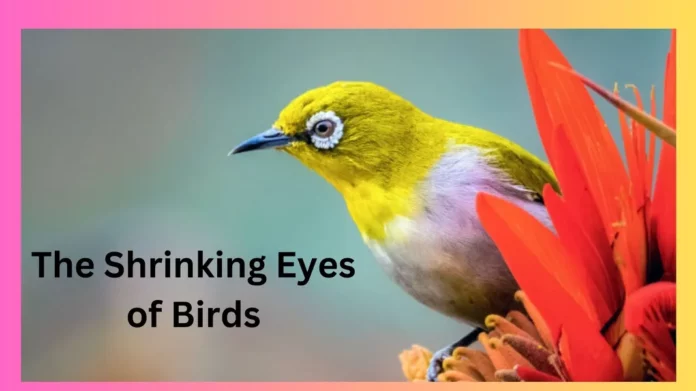The Shrinking Eyes of Birds In the hustle and bustle of our modern cities, one may not pause to consider the profound effects urbanization has on our natural surroundings.
Among the lesser-known consequences is the gradual reduction in the size of bird eyes—a phenomenon that is quietly unfolding in the midst of the city lights.
In this article, we will delve into the fascinating world of avian adaptations, the consequences of excessive artificial illumination, and the implications for our feathered friends.
Bird Vision: A Marvel of Evolution
Before we explore the impact of city lights on birds, let’s take a closer look at the remarkable world of bird vision.
The Wonders of Avian Eyesight
Birds are among nature’s most exceptional visual creatures. Their eyes are adapted to perceive a broader spectrum of colors and ultraviolet light, allowing them to see what humans cannot. This heightened visual acuity aids in various aspects of their lives, including hunting, navigation, and mate selection.
Adaptations for Flight
Birds’ eyes are perfectly tailored to their flying lifestyles. They possess excellent depth perception, rapid image processing capabilities, and a wide field of vision, all of which are essential for maneuvering through complex environments.
The Impact of City Lights
The Glaring Issue
As urban areas continue to expand, the nightscape is increasingly dominated by artificial light sources, from street lamps to skyscraper illumination. This pervasive light pollution has several concerning effects on birds.
Disrupted Circadian Rhythms
Just as excessive light disrupts our sleep patterns, it does the same to birds. Artificial light at night can confuse their internal clocks, leading to altered behavior and nesting patterns.
Attraction and Confusion
Many migratory birds are drawn off course by city lights, leading to collisions with buildings. Moreover, city illumination can interfere with their celestial navigation, making it harder for them to find their way.
Predators at an Advantage
City lights can also benefit nocturnal predators, making it easier for them to spot unsuspecting prey. This creates a challenging environment for many smaller bird species.
The Shrinking Eyes Phenomenon
A Natural Response
In response to the challenges posed by city lights, some bird species are undergoing an astonishing adaptation: the gradual reduction in the size of their eyes.
Smaller Eyes for Survival
Smaller eyes require fewer resources and are more efficient in brightly lit environments. This adaptation helps birds conserve energy and remain vigilant in urban areas.
Evolution in Action
This change is a prime example of rapid evolution in response to human-induced environmental alterations. Birds with smaller eyes have a survival advantage in cities, passing their genes to the next generation.
The Future of Avian Sight
Conservation Efforts
Recognizing the impact of light pollution on birds, conservationists are working to mitigate its effects. Strategies include implementing bird-friendly lighting and raising awareness about the issue.
The Importance of Balance
Finding a balance between human development and wildlife conservation is crucial. We must strive to create urban environments that are not only conducive to our needs but also respectful of the natural world.
Conclusion:
In the heart of our cities, the eyes of birds are quietly adapting to the ever-present glare of artificial light. This remarkable example of nature’s resilience highlights the intricate relationship between urbanization and wildlife. As we continue to transform our cities, let us remember the importance of coexisting with the natural world, ensuring that the skies above remain a sanctuary for our feathered friends.
FAQs:
1. Why are bird eyes getting smaller in cities?
Birds are adapting to the excessive artificial light in urban areas by reducing the size of their eyes. Smaller eyes require fewer resources and are more efficient in brightly lit environments.
2. How does light pollution affect bird behavior?
Light pollution disrupts bird circadian rhythms, alters their behavior and nesting patterns, and can lead to disorientation during migration.
3. What can be done to help birds in urban environments?
Conservation efforts include implementing bird-friendly lighting, raising awareness about light pollution, and creating urban spaces that consider the needs of wildlife.
4. Are all bird species affected by shrinking eyes?
Not all bird species are affected equally. Species that are more adaptable tend to exhibit these changes more prominently.
5. Is light pollution reversible, and can we restore natural darkness to our cities?
While complete reversal may be challenging, it is possible to reduce light pollution through better urban planning and the use of lighting technologies that minimize its impact on the environment.















